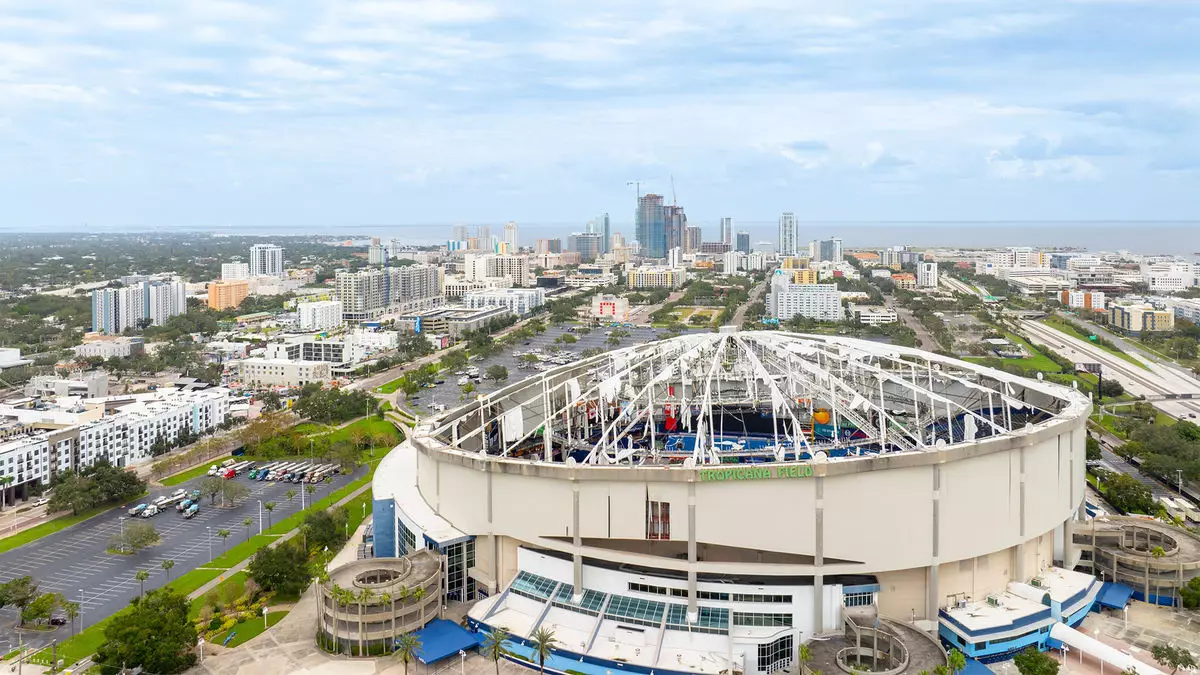In late September and early October 2023, hurricanes Helene and Milton delivered a devastating blow to Florida’s coastal areas, particularly affecting the Gulf Coast. The hurricanes not only caused physical destruction but also set in motion significant changes in the tourism landscape of the state. Small, independent hospitality businesses are finding themselves at the forefront of these challenges as they assess the damage and consider their futures in a significantly altered environment. As the dust settles, the long-term recovery for these businesses appears bleak, with potential shifts toward a more upscale tourism market.
Arthur Huang, an expert from the University of Central Florida’s Rosen College of Hospitality Management, emphasized that the overall impact is still being measured. However, he cautioned that certain attractions and beach areas might take longer to return to their pre-storm conditions. This concern is significant for communities that rely heavily on tourism, with local economies poised to crater should recovery not happen swiftly.
The immediate economic ramifications of the hurricanes are painfully evident. Peter Ricci, director of Florida Atlantic University’s Hospitality and Tourism Management program, explained that popular destinations such as Sarasota’s St. Armands and Lido Key, along with Punta Gorda and Fort Myers Beach, are likely to suffer lasting consequences. The fear is that many small business operators, already stretched thin by previous storm recoveries like that of Hurricane Ian, may choose to cash out and exit the market rather than face the mounting challenges of restoration.
Ricci notes that the existing insurance models may not adequately cover the full extent of the damage. As he put it, “Many of the mom-and-pop businesses may take the insurance payout and decide not to rebuild.” This decision is compounded by modern building codes and the economic realities of starting anew. Huang echoed these sentiments, emphasizing that smaller enterprises would bear the brunt of increased insurance premiums and limited resources—a dual burden that could deter recovery.
The exodus of smaller, family-run establishments could usher in a new era of tourism on the Gulf Coast, one that favors larger developers and high-end offerings. As Ricci pointed out, the Gulf Coast may see a transformation into a more upscale market, as only those with substantial financial resources will be able to invest in rebuilding under stricter regulations. While this shift may result in modernized facilities and enhanced tourist experiences, it comes at the expense of the area’s traditional, accessible charm—replacing quaint motels and local restaurants with luxury resorts and upscale dining.
Despite this optimistic outlook for new developments, the reality is that rebuilding will take considerable time. Ricci noted a marked decline in available accommodations on Fort Myers Beach, as many properties remain closed long after their scheduled reopening dates. The lingering aftermath of Hurricane Ian continues to hang over the area like a dark cloud, affecting both local residents and potential visitors.
The impact of such storms extends well beyond the immediate damage to physical property. For employees in the tourism sector, the prolonged closures of hotels and restaurants translate to lost wages and job insecurity. Huang highlighted the struggles workers will face as they navigate unemployment while waiting for their places of work to reopen. This situation places immense pressure on both employees and owners, creating a cycle of hardship that can hamper recovery efforts for the broader community.
Even regions that escaped the worst of the hurricanes, such as key tourist markets like Tampa and Orlando, are feeling the ripple effects. Cancellations and postponements of meetings and events will likely hinder their tourism revenues for the immediate future. Ricci emphasized that these hubs may face challenges as they work to reschedule missed group business while attempting to capitalize on the impending high tourist season, which stretches from December through April.
In response to the turbulence caused by the hurricanes, Visit Florida, the state’s tourism marketing arm, is pursuing comprehensive recovery strategies. CEO Dana Young indicated the organization has begun rolling out social media campaigns aimed at re-engaging potential visitors while showcasing areas less affected by the storms. Through timely messaging such as “Stronger Than the Storm” and “Sun Is Shining in Florida,” Visit Florida aims to reassure travelers that many parts of the state remain open and inviting.
On the ground, local businesses are gradually bouncing back, with popular spots like the Clearwater Marine Aquarium and the Dali Museum beginning to reopen. Jason Latimer from Visit St. Pete-Clearwater reported that much of the destination remains operational despite the recent events, showcasing resilience in the face of adversity.
To that end, as Florida’s tourism sector weathers these storms, the dual narrative of loss and resurgence is being carefully crafted. While many businesses will require time and investment to recover, a shift toward a potentially revitalized tourism model waiting on the other side may provide fresh hope, albeit tinged with sacrifice.

